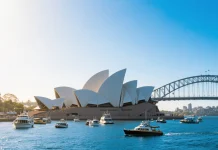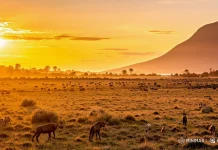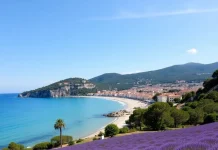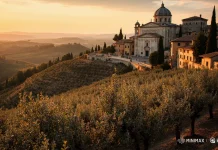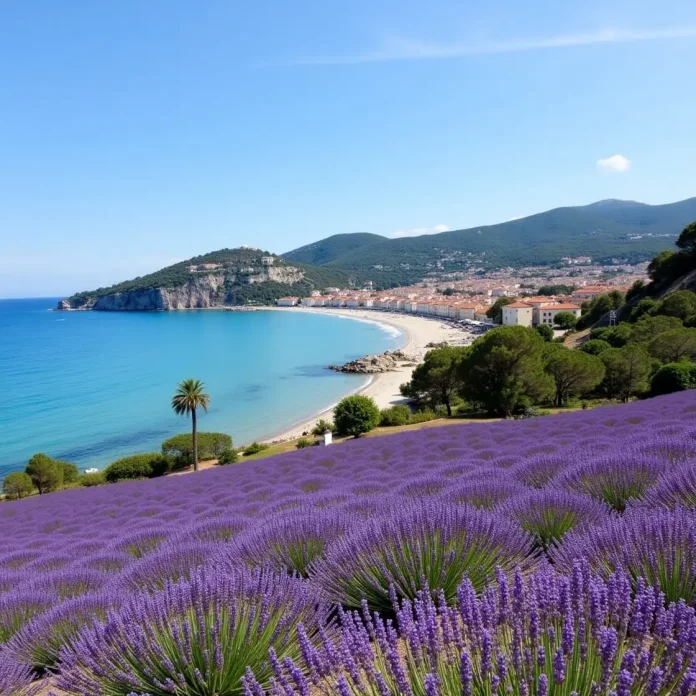Olivia had always been enchanted by the allure of southern France. The idea of vast lavender fields stretching as far as the eye could see, the glistening blue waters of the Côte d’Azur, and the luxurious charm of Monaco danced in her imagination. When she finally arrived, she was overwhelmed by the choices. Should she rush from one tourist spot to another or take her time to soak in the local culture? Many travelers find themselves in a similar dilemma. This guide will navigate you through the romantic tapestry of southern France, ensuring you don’t miss a beat.

Why Southern France?
Southern France, a region steeped in history, culture, and natural beauty, is a haven for travelers. It is home to the world – famous Provence, known for its lavender fields that paint the landscape in a dreamy shade of purple. The Côte d’Azur, with its glamorous beaches and charming coastal towns, has attracted artists, celebrities, and travelers for centuries. According to the French Tourism Development Agency, over 30 million tourists visit southern France annually, drawn by its unique blend of sun, sea, and culture. Whether you’re a nature lover, a history buff, or a food and wine enthusiast, southern France has something to offer.
Things to Know Before You Go
Best Time to Visit
- Spring (March – May): The region comes alive with colorful wildflowers, and temperatures are mild, ranging from 10 – 20°C. It’s an excellent time for exploring the countryside, visiting vineyards, and enjoying outdoor activities. However, some attractions may have limited opening hours.
- Summer (June – August): This is the peak tourist season, with temperatures soaring to 25 – 35°C. The beaches are crowded, but there are numerous festivals and events, such as the Cannes Film Festival and the Nice Jazz Festival. Accommodation prices are at their highest, and it’s advisable to book in advance.
- Autumn (September – November): The vineyards turn into a riot of colors, making it a perfect time for wine tours. Temperatures are still pleasant, and there are fewer tourists. You can also enjoy the harvest festivals and sample the local produce.
- Winter (December – February): It’s the off – peak season, with cooler temperatures (5 – 15°C). While some attractions may be closed, you can enjoy the quiet charm of the towns, visit museums, and experience the local Christmas markets.
Visa / Entry
For most non – EU travelers, a Schengen visa is required to enter France. Ensure your passport is valid for at least three months beyond your intended stay. When entering the country, be aware of customs regulations, which restrict the import of certain items. You may also need to declare cash amounts exceeding 10,000 euros.
Transportation Tips
- By Air: Nice Côte d’Azur Airport is the main gateway to the region, with connections to major cities around the world. Marseille – Provence Airport is another option, especially if you plan to explore the western part of southern France. Renting a car gives you the flexibility to explore the countryside, but be prepared for narrow roads in some areas.
- By Train: The French rail network, SNCF, is efficient and connects major cities and towns in southern France. High – speed trains like the TGV make traveling between cities like Nice, Marseille, and Avignon convenient. You can purchase tickets online or at the train station.
- Local Transport: In cities, buses and trams are available. In coastal areas, there are also ferry services that can take you to nearby islands. Many towns have bike – sharing programs, which are a great way to explore at your own pace.
Budget Reference
| Expense Category | Budget – Friendly ($/day) | Mid – Range ($/day) | Luxury ($/day) |
| Accommodation | 80 – 150 | 200 – 400 | 600+ |
| Food | 40 – 60 | 80 – 150 | 250+ |
| Transportation | 30 – 50 | 60 – 100 | 150+ |
| Activities | 20 – 30 | 50 – 80 | 120+ |
| Total | 170 – 290 | 390 – 730 | 1120+ |
Highlights of the Itinerary
Must – Visit Attractions
- Provence – The Lavender Capital: Head to Valensole, which boasts the largest lavender fields in Provence. From a distance, the sight of endless purple fields swaying in the breeze is simply breathtaking. As you walk through the fields, the sweet, aromatic scent of lavender engulfs you. The lavender here is mainly of the variety “lavandin,” a hybrid known for its high oil content. The local economy thrives on lavender – related products, from essential oils used in aromatherapy to delicious lavender – flavored desserts. You can visit local farms and distilleries to learn about the extraction process and even purchase some authentic lavender products.
- Nice – The Jewel of the Côte d’Azur: The beaches in Nice are a major draw. The Promenade des Anglais, a long, palm – tree – lined walkway, runs along the Baie des Anges. The beaches are a mix of sandy and pebble – strewn areas, with clear, blue waters perfect for swimming. Along the shore, you’ll find a variety of cafes and restaurants where you can enjoy a refreshing drink or a delicious meal. The old town of Nice, Vieux Nice, is a maze of narrow, winding streets filled with colorful buildings, charming shops, and local markets. Here, you can sample local delicacies like socca, a savory chickpea pancake.
- Monaco – The Epitome of Luxury: The Monte – Carlo Casino is an architectural marvel. Inside, the opulent decor, with crystal chandeliers and marble floors, sets the stage for high – stakes gambling. Even if you’re not a gambler, the casino’s beauty is worth admiring. The Prince’s Palace of Monaco, where the royal family resides, offers guided tours. You can see the State Apartments, with their magnificent frescoes and antique furniture, and watch the changing of the guard ceremony. On the streets of Monaco, luxury cars like Ferraris, Lamborghinis, and Bentleys are a common sight, adding to the city – state’s glamorous allure.
Hidden – Gem Experiences Loved by Locals
- Gordes: This hilltop village in Provence is known for its unique architecture, with houses built in a honey – colored stone. The views from the village over the surrounding countryside are spectacular. Explore the narrow streets, visit the local art galleries, and enjoy a meal at a traditional Provençal restaurant.
- Eze: Perched on a cliff between Nice and Monaco, Eze is a medieval village with a fairy – tale charm. Walk along the cobblestone paths, visit the Exotic Garden filled with cacti and other rare plants, and enjoy panoramic views of the Mediterranean Sea.
- Cassis: A small fishing village near Marseille, Cassis is famous for its calanques, narrow inlets of the sea surrounded by steep cliffs. Take a boat tour to explore these natural wonders, or go hiking along the coastal trails for stunning views.
Season – Specific Activities
- Spring: Join a wildflower – watching tour in the Luberon region of Provence. The area is carpeted with a variety of colorful wildflowers, creating a vibrant and beautiful landscape.
- Summer: Attend the Cannes Film Festival if you can get tickets. Even if you’re not inside the festival venues, the atmosphere in Cannes during this time is electric, with celebrities, filmmakers, and fans from around the world.
- Autumn: Participate in a wine – tasting tour in the Bandol region. The local wines, mainly reds made from the Mourvèdre grape, are known for their rich flavor and complexity.
- Winter: Visit the Christmas markets in cities like Nice and Avignon. These markets are filled with festive decorations, local handicrafts, and delicious seasonal treats.
Avoiding Pitfalls
Common Traps
- Overpriced Tourist Restaurants: In popular areas, especially near major attractions, some restaurants may charge exorbitant prices for mediocre food. Look for restaurants away from the main tourist drag and check online reviews before dining.
- Pickpockets: In crowded areas, such as markets and public transportation, be vigilant against pickpockets. Keep your valuables in a secure place and be aware of your surroundings.
- Hidden Fees: When renting a car, make sure to read the fine print. Some rental companies may charge hidden fees for things like additional drivers, fuel, or insurance.
Alternative Options
- Food: Seek out local bistros and brasseries recommended by locals. These places often offer authentic French cuisine at reasonable prices. You can also try street food like crepes and paninis from local vendors.
- Accommodation: Consider staying in guesthouses or vacation rentals instead of expensive hotels. Websites like Airbnb and Booking.com offer a wide range of options. In Provence, you can also stay in a charming mas, a traditional Provençal farmhouse.
- Activities: Look for free or low – cost activities, such as visiting public parks, exploring local markets, or taking self – guided walking tours of historic areas. Many museums in France offer free admission on certain days of the week.
Safety Tips
- Traffic: If driving, be cautious on the roads, especially in mountainous areas. The roads can be narrow and winding, and the driving style in France can be aggressive.
- Health: Make sure your vaccinations are up – to – date. In summer, protect yourself from the sun with sunscreen, a hat, and sunglasses, as the sun can be very strong.
- Emergency: In case of an emergency, dial 112 for general emergency services in France. Keep the contact information of your embassy or consulate handy.
Useful Toolkit
APPs / Websites
- Google Maps: Essential for navigation, whether you’re driving, using public transport, or walking. It also helps you find nearby attractions, restaurants, and accommodation.
- TripAdvisor: Read reviews and ratings of restaurants, hotels, and attractions. You can also book tickets and make restaurant reservations through the app.
- SNCF Connect: For train schedules, ticket bookings, and real – time updates on train arrivals and departures.
- TheFork: A great app for finding and booking restaurants in France. It often offers special deals and discounts.
Local Contacts
- Tourist Information Offices: Located in major cities and towns, these offices can provide maps, brochures, and information about local attractions, events, and transportation.
- Wine Tours: Many vineyards in southern France offer guided tours. You can book tours directly through the vineyard’s website or contact local tour operators for recommendations. In Provence, for example, companies like Provence Wine Tours can arrange customized wine – tasting experiences.
Emergency Contacts
- General Emergency: 112
- Non – Emergency Medical Assistance: 15
- Embassy/Consulate: Find the contact information of your country’s embassy or consulate in France before your trip. In case of an emergency, they can provide assistance and support.
Southern France, with its romantic lavender fields, glamorous coastal towns, and rich cultural heritage, is a destination that captivates the heart and soul. Which part of this beautiful region are you most excited to explore? Share your thoughts and start planning your unforgettable journey today!












